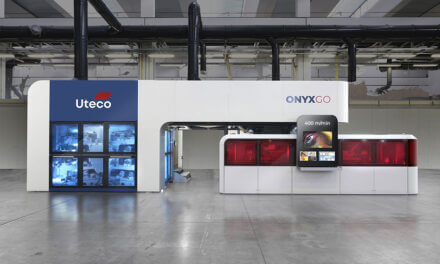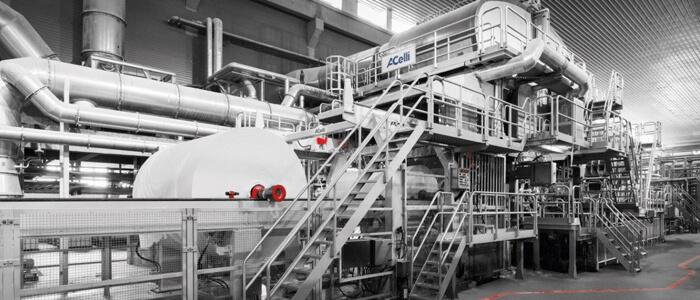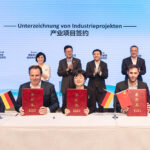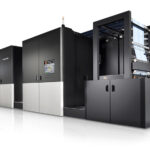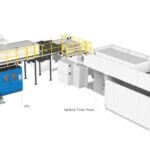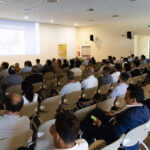To be able to operate in a world that is changing even faster than it already appeared to do so yesterday, you need to change paradigm. Interviews with experts and stories of good practices, and a window on the complex and concrete project that the Italian Paper and Graphics Federation has launched to support the transition of companies to the new digitalized dimension.
What actually is “Industry 4.0”, why is it important and what is happening in our sector of printers and converters of flexible packaging and paper&board converters? We talk about it in this article which also reports some experiences made by the sector’s “best in the class” companies, to show how this development model can be implemented, and with what results. To introduce the subject, we document the fact that Italian industry in general is still pretty backward in the process of digitization, citing by comparison, the liveliness of the Italian print-graphic supply chain, supported by the initiative promoted within the Italian Paper and Graphics Federation to help companies in the transition to the new industrial paradigm. A “different” help: not merely comprising information but concrete support towards a change that is not an option, and for which the current pandemic has even further highlighted the urgency.
Digitalization levels and support measures
According to the latest Istat census of Italian companies, referring to 2018 and conducted on a representative sample of one million concerns, Italian industry is definitely behind in the digitalization process. Most companies use a limited number of technologies favoring infrastructural investments (cloud solutions, fibre optic or mobility connectivity, management software), and only 16.6% of the universe considered has adopted at least one typically “4.0” technology: Internet of things, augmented or virtual reality, Big Data, advanced automation, simulation and 3D printing. It is from the latter area that the highest growth is expected, estimated between 2019 and 2021 in + 180.7% for immersive technologies, + 117.6% for 3D printing, + 111.9% in Big Data and + 109.9% in robotics.
Government investment aid, although much lower than that of other advanced nations, represents an important stimulus. According to the calculations of Mes and Confindustria, in 2017 hyper-amortization generated ten billions of investments in hi-tech machinery and equipment, to which another 3.3 for intangible assets should be added. Companies of all sizes have been involved: 96% of the beneficiaries, which corresponds to 66% of the incentivized investments, are made up of companies with less than 250 employees, but 35% of the 4.0 investments are made by companies with less than 50 employees.
Enabling technologies
In terms of technologies, Industry 4.0 means IoT (the components to connect the machines to the network), Industrial Analytics and Cloud Manufacturing but also, on the operational level, Advanced Automation, Additive Manufacturing and Advanced Human Machine Interface. These systems affect all areas of a business: the factory – meaning production, logistics, maintenance, quality, safety and compliance with standards; product, lifecycle and supplier development; supply chain management or the planning of physical and financial flows.
The Federation’s “accompanying path”
In 2015, during the great Italian Expo inspired by the themes of nutrition and energy, the Press and Graphics Federation made public the outcome of the first step of a demanding project: to offer companies in the supply chain the tools to design and start a path to transition to level 4.0 industries. Challenging for the importance of the objective and the complexity that needs to be managed – with the competitiveness of the sector at home and abroad at stake, the undertaking witnessed the direct involvement of SDA Bocconi, with whom the Federation worked at various levels.
The distinctive aspect of this proposal, which has achieved a very high level of adhesion, is its concreteness. “The objective of the Federation – explains Carlo Emanuele Bona, PM and Federation Councilor – was to offer companies all the necessary theoretical and operational tools to face a strategic change, that was both necessary and urgent. Already in the mapping phase, we hence assisted companies in compiling an articulated questionnaire-identikit from which to start for the next job”.
The second step, explains Bona, has been to create a tool kit for the application of Industry 4.0 rules that can be used by all the companies that make up the Federation: both machine manufacturers and packaging converters, for whom the IoT represents a fundamental asset, as well as book or catalogues printers who, on the other hand, require other tools. The concept, also borrowed from previous experience gained in Assografici with other companies and matters, has been remodeled on new objectives and new complexities, with unhoped for results.
“Thanks to the energy and tenacity of the directors of Acimga, Assografici and Assocarta, and to the commitment of the board of directors, the project has been adopted by the company base involving 110 participants. It is a goal that shows all its significance when compared to the 120 that Confindustria has aggregated as a whole, and of which we are particularly proud: not only does it “reward” the great commitment as a structure but it demonstrates the maturity and awareness of the supply chain on the subject”.
Once the tool kit had been prepared, it was time for lessons at the Bocconi – “important to convey to the managers of companies the notions necessary to proceed on the road to digitalization” – and then individual itineraries, which saw Bocconi consultants directly in the company to develop their own paths”. These consultations, Bona underlines, were paid for by the companies at a negligible “political price”, being part of the more general program financed directly by the Federation.
And now? Things are back with the companies but the Federation has planned an “addendum” to the initial project: “We have asked Professor Baglieri of SDA Bocconi, who designed and coordinated the project from the beginning, to bring and analyse stories of already completed 4.0 experiences in our sector, in Italy and abroad. They will help understand the application methods, the extent of the change taking place and the power of the new digitized and connected horizon. But not only that : the implementation of the 4.0 business model also constitutes an essential part of the other large federative project supporting the passage of companies to a higher level of profitability and competitiveness. I refer to Sustainability as an essential element and horizon of development, to which Industry 4.0 provides the enabling technology without which many of the goals of an advanced and eco-compatible economy would not be achievable”.



